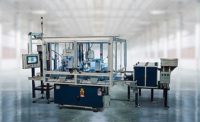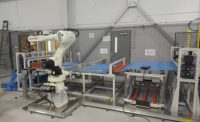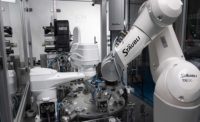When a leading manufacturer of automotive drivetrain components was presented with an opportunity to grow its business, the company approached PrimeTest Automation to analyze its current production process and develop a system that could meet its new production volume requirements.
The company’s current process had been in place for more than 20 years and relied heavily on a labor-intensive, manual process. A trained operator was producing a finished part every 2 minutes, requiring two operators to meet a production volume of 80,000 units per year. With volumes projected to increase to 400,000 units annually, the company would need at least seven workers to keep pace.
Additionally, because components were assembled manually, the likelihood of inconsistencies in the final product and overall quality issues would be higher than with an automated process. It would also make production planning more difficult.
Overall, the process was inefficient and needed to be updated with modern production techniques. PrimeTest was up to the challenge. Drawing on its experience with robotics, vision inspection, controls and small-part handling, PrimeTest developed a more efficient, automated process.
The system features two Fanuc LR Mate 200iD robots for material handling and machine tending. These robots move the customer’s product through a series of process operations involving material blanking and bonding, and then through final vision inspection utilizing a Keyence IV-500MA vision sensor.
Although PrimeTest’s headquarters is located more than 1,000 miles away from the manufacturer’s facility, a VPN device integrated into the machine’s control system enables the integrator’s engineers to support the customer’s operation remotely. With this remote access, PrimeTest engineers can access more than 17 Ethernet devices within the system. These devices include programmable safety devices, programmable logic controllers, servo and stepper drives, vision systems, and remote I/O modules.
The robotic assembly system increased output to 3.75 units per minute, meeting the customer’s projected volumes with just one operator tending the system. In addition, the automated process assembles a more consistent final product.
To see a video of the line, click here. For more information on automated assembly and test equipment, click www.primetest.com.




